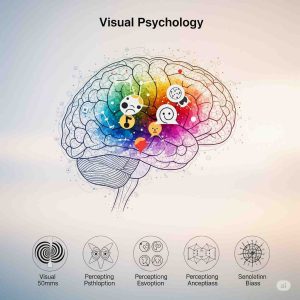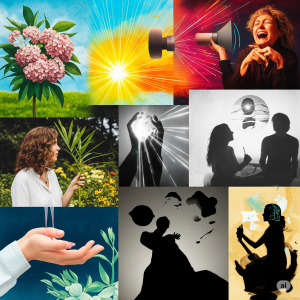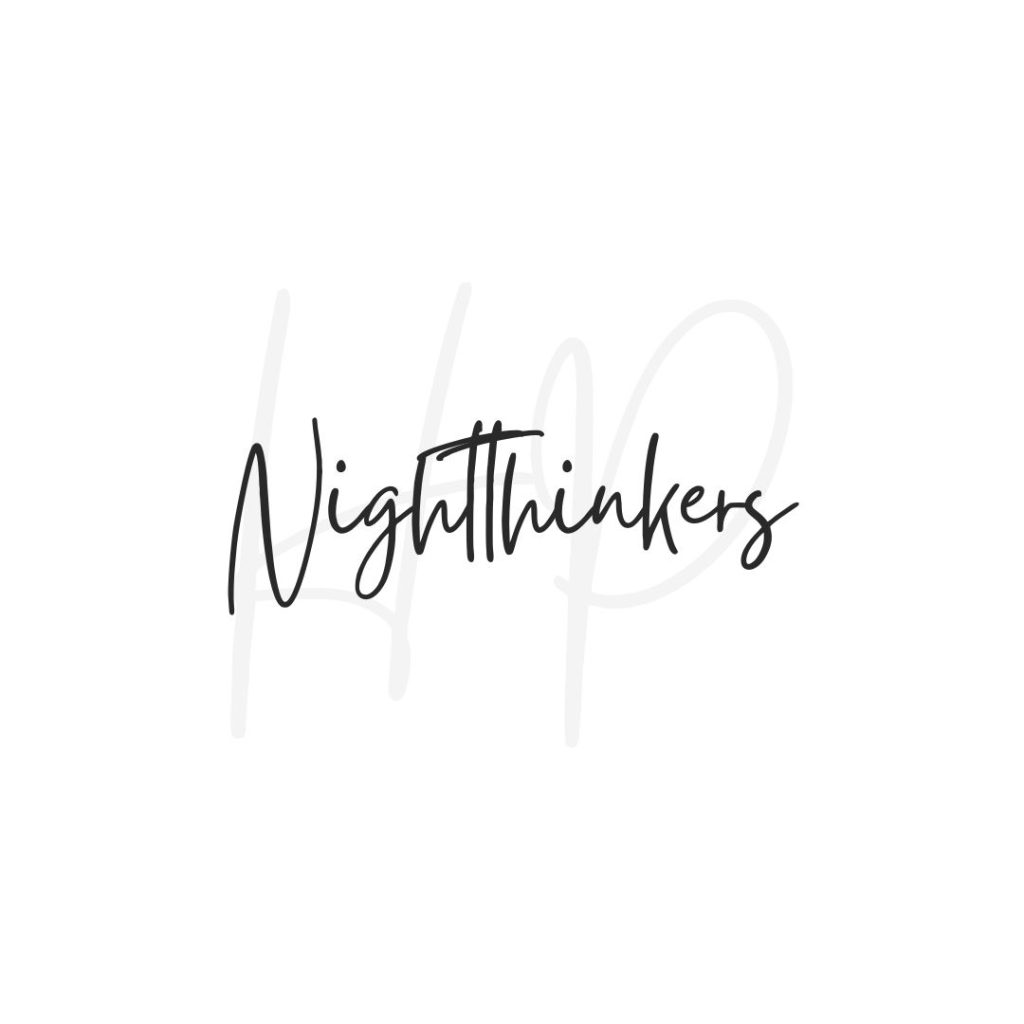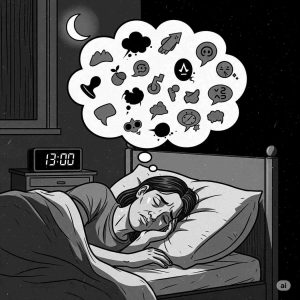What is Visual Cliff in Psychology What is an example of visual psychology
Psychology, as a discipline, often relies on ingenious experiments to unravel the mysteries of human and animal behavior. One such groundbreaking experiment is the Visual Cliff, a concept that has played a pivotal role in developmental psychology and perception studies. The visual cliff experiment has not only illuminated our understanding of depth perception but also opened up crucial insights into how infants and animals perceive their environments.
In this article, we’ll explore what the visual cliff is, its origins, the methodology behind the experiment, its key findings, implications, critiques, and how it continues to influence psychological research today.

1. Definition of the Visual Cliff What is an example of visual psychology
It consists of a glass-covered platform that creates the illusion of a drop-off or cliff, even though the surface is completely safe. One half of the platform has a solid surface directly under the glass, while the other half has a pattern far below the glass, creating the appearance of a steep fall.
The aim is to determine whether a subject—typically an infant or a young animal—can perceive the drop and will avoid crossing over the “cliff” side.
2. History and Origin What is an example of visual psychology
The visual cliff was first developed in 1960 by psychologists Eleanor J. Gibson and Richard D. Walk at Cornell University. Their goal was to study whether depth perception is an inborn or learned trait.
Gibson and Walk were particularly interested in how early in development humans and animals acquire the ability to perceive depth. Their work was inspired by studies in visual perception and ecological psychology, which emphasized the role of the environment in shaping perceptual abilities.
3. Methodology of the Visual Cliff Experiment
Apparatus Design:
The visual cliff consists of:
- A large, flat glass surface.
- One side with a checkerboard pattern directly beneath the glass (the “shallow side”).
- Another side with the same pattern placed several feet below the glass (the “deep side”), giving the illusion of a cliff.
- The glass is strong and covers the entire area, making it physically safe to cross.
The Experiment:
In the classic study:
- Infants (usually around 6–14 months old, when they start crawling) were placed on the center of the apparatus.
- A parent would stand at the far end of the deep side, calling the infant to come over.
- Researchers observed whether the infant would crawl over the “cliff” area or hesitate and avoid it.
Similar tests were conducted with various animal species, including chicks, lambs, turtles, and rats, to observe instinctual depth perception.
4. Key Findings What is an example of visual psychology
The experiment revealed several crucial points:
4.1 Depth Perception is Present Early
Most infants refused to crawl over the deep side, suggesting they could perceive the depth and interpreted it as a potential fall. This was interpreted as evidence that depth perception develops very early in life, possibly as an innate ability rather than one entirely learned What is an example of visual psychology through experience.
4.2 Species-Specific Behavior
Different animals showed varying responses based on their ecological needs:
- Chicks and lambs, which are mobile shortly after birth, avoided the deep side almost immediately, showing strong depth perception.
- Turtles, which are less dependent on visual cues, were more likely to cross.
- Rats, relying more on tactile cues (like whiskers), showed less visual-based avoidance unless their whiskers were removed.
4.3 Role of Experience
Although the results leaned toward an innate basis for depth perception, they also suggested that experience enhances this ability.
5. Implications of the Visual Cliff What is an example of visual psychology
The visual cliff experiment has wide-reaching implications across several domains:
5.1 Developmental Psychology
It supports the idea that some perceptual abilities are innate or emerge very early. This challenges the notion that all learning is derived from experience.
5.2 Evolutionary Psychology
Species that need to navigate visually complex environments show What is an example of visual psychology stronger inborn depth perception abilities. This supports the theory of adaptive traits evolving for survival.
5.3 Infant Safety and Parenting
Understanding that infants can perceive danger from heights informs how parents and caregivers design safer environments during early childhood development.
5.4 Neuroscience and Vision Studies
The findings align with modern research on the brain’s visual pathways and how spatial and depth-related information is processed, especially in early brain development.

6. Criticisms and Limitations What is an example of visual psychology
6.1 Ethical Concerns
Though the glass surface ensures safety, the illusion of danger may cause stress or fear in infant participants, raising ethical questions about consent and emotional impact.
6.2 Interpretation Ambiguity
Some researchers argue that refusal to cross may not be solely due to depth perception but fear of novel situations, making interpretation of the results complex.
6.3 Limited Age Range
Most visual cliff studies focus on infants who are already mobile. This makes it difficult to study how early perception actually develops, since newborns cannot be tested the same way.
7. Modern Adaptations and Technologies What is an example of visual psychology
Modern psychology and neuroscience have adapted the concept of the visual cliff using virtual reality (VR) and computer-based visual simulations. These allow researchers to simulate cliffs and falls without needing physical apparatuses, and also to test neural responses in real-time using brain imaging.
Studies using eye-tracking and functional MRI (fMRI) now explore how infants and even adults process depth cues, offering deeper insight into the brain mechanisms behind spatial perception.
8. Real-Life Applications
Understanding visual perception has numerous applications:
- Childproofing environments in homes and daycares.
- Designing early education tools that align with perceptual development.
- Developing robotic vision systems inspired by natural depth perception.
- Assisting in diagnosing and treating visual or developmental disorders in infants.
9. Visual Cliff and Cognitive Development What is an example of visual psychology
The visual cliff also ties into broader cognitive themes, such as:
- The development of fear and risk aversion.
- The emergence of spatial awareness and object permanence.
- The relationship between motor development and perceptual learning—as children begin to move, they start to better understand space and boundaries.
How Visual Sense Works:
- Reception (Eyes):
- Transduction (Retina):
- Rods detect black and white (night vision), while cones detect color (daylight vision).
- These photoreceptors convert light into neural signals.
- Transmission (Optic Nerve):
- The signals travel via the optic nerve to the brain, specifically the visual cortex in the occipital lobe.
- Perception (Brain):
- The brain interprets signals to recognize shapes, motion, faces, depth, and distance.
🧠 Role in Psychology:
1. Perception and Cognition
- Vision provides the majority of our sensory information.
- It’s essential for object recognition, reading, social interaction, and environmental awareness.
2. Depth Perception and Spatial Awareness
- Visual cues help us judge distance and spatial relationships (e.g., visual cliff experiments in developmental psychology).
3. Learning and Memory
- Visual stimuli play a major role in visual learning, memory recall, and pattern recognition.
4. Emotion and Facial Recognition
- The ability to read facial expressions and body language relies heavily on visual processing.
🔬 Areas of Research in Visual Psychology:
- Visual Perception: How we interpret visual stimuli.
- Color Psychology: How color affects behavior and emotion.
- Visual Attention: How we focus on specific visual information while ignoring others.
- Developmental Vision: How visual ability develops in infants and children.
- Neuropsychology of Vision: How visual information is processed in the brain.
✅📚 Example in Psychology:
- Visual Cliff Experiment – Studied how infants perceive depth using visual information.
- Gestalt Principles – Explain how humans tend to organize visual elements into whole forms.
- Optical Illusions – Used to explore how the brain processes complex or ambiguous visual input.
The Five Senses in Psychology:
1. Sight (Vision)
- Organ: Eyes
- Function: Detects light, color, shape, motion, and depth.
- Psychological Importance: Crucial for perception, facial recognition, reading, spatial awareness, and interpreting visual cues.
2. Hearing (Audition)
- Organ: Ears
- Function: Detects sound waves and vibrations (pitch, volume, tone).
- Psychological Importance: Essential for communication, music perception, environmental awareness, and auditory memory.
3. Touch (Tactile or Somatosensation)
- Organ: Skin (through receptors)
- Function: Senses pressure, temperature, pain, and texture What is an example of visual psychology.
- Psychological Importance: Vital for physical connection, detecting danger (pain), emotional bonding, and body awareness.
4. Taste (Gustation)
- Organ: Tongue (taste buds)
- Function: Identifies flavors: sweet, salty, sour, bitter, and umami.
- Psychological Importance: Connected to enjoyment, nutrition, survival instincts, and even memory and emotion.
5. Smell (Olfaction)
- Organ: Nose (olfactory receptors)
- Function: Detects airborne chemicals as odors.
- Psychological Importance: Strongly linked to memory, emotion, flavor perception, and environmental awareness.
🧠 Why Are These Senses Important in Psychology?
- They form the foundation of perception, influencing how we interpret and respond to the world.
- They are crucial for cognitive development, especially in infancy.
- Disorders or impairments in these senses can significantly affect mental health and quality of life.
- Psychologists study how the brain processes, integrates, and interprets sensory information to understand behavior.
🧩 Beyond the Traditional Five Senses What is an example of visual psychology
- Proprioception: Awareness of body position and movement.
- Vestibular sense: Sense of balance and spatial orientation.
- Interoception: Perception of internal bodily states (e.g., hunger, thirst, heartbeat).
These are sometimes called the “hidden senses” and are crucial for a full understanding of human perception.
1. Sight (Vision) – The Most Dominant Sense
✅ Why it’s considered the strongest:
- About 80% of the information our brain processes comes through visual input.
- The visual cortex occupies a large portion of the brain, showing how crucial vision is to human functioning.
🔍 Strength:
- Dominance in perception and learning.
- Fast processing of complex information.
- Integral to spatial awarenes
👃 2. Smell (Olfaction) – The Most Emotionally Powerful
✅ Why it’s unique:
- Smell has a direct link to the limbic system—the brain area for emotion and memory.
- A single scent can instantly trigger strong memories or emotions (known as the Proust phenomenon).
🔍 Strength:
- Emotional impact.
- Memory retrieval.

👂 3. Hearing (Audition) – Key for Communication What is an example of visual psychology
✅ Why it’s powerful:
- Enables language, music appreciation, and auditory learning.
- Works even when we’re asleep (e.g., alarms waking us up).
- Essential for social bonding and understanding spoken cues.
🔍 Strength:
- Communication and alertness.
- Detects danger (e.g., approaching footsteps, sirens).
- Aids in emotional tone recognition (e.g., someone’s voice mood).
✋ 4. Touch (Tactile Sense) – Most Immediate and Intimate
✅ Why it’s vital:
- First sense to develop in the womb.
- Crucial for bonding, especially in infancy.
- Protects us via sensations of pain, temperature, and pressure.
🔍 Strength:
- Physical safety.
- Foundation of emotional security and human connection.
- Enables fine motor skills and object manipulation.
👅 5. Taste (Gustation) – The Most Survival-Oriented What is an example of visual psychology
✅ Why it matters:
- Alerts us to dangerous or poisonous substances.
- Works in close coordination with smell to perceive flavor.
- Strongly linked to emotion and pleasure.
🔍 Strength:
- Nutritional and survival value.
- Plays a role in reward and satisfaction systems
1. Introduction to the Senses What is an example of visual psychology
The human sensory system is responsible for converting environmental signals—light, sound, vibration, chemicals, and physical contact—into neurological signals the brain can interpret. These signals inform our decisions, reactions, emotions, and even memories.
The traditional five senses:
- Sight (Vision)
- Hearing (Audition)
- Touch (Tactile)
- Smell (Olfaction)
- Taste (Gustation)
In addition, psychologists and neuroscientists recognize other senses such as proprioception (sense of body position), interoception (internal states), and vestibular sense (balance).
2. What Does “Fastest Sense” Mean What is an example of visual psychology
When we say “fastest sense,” we refer to:
- How quickly a stimulus is detected
- How fast the signal is sent to the brain
- How rapidly the brain processes and reacts to the stimulus
So, the fastest sense is the one that:
- Detects change in the environment almost instantly
- Sends this information through neural pathways with minimal delay
- Triggers an immediate response, sometimes even reflexively
3. How Sensory Processing Works What is an example of visual psychology
Step 1: Sensory Reception
Specialized receptors detect external stimuli. For example, photoreceptors in the eyes detect light, while hair cells in the cochlea detect sound waves.
Step 2: Neural Transmission
Once detected, the stimulus is converted into electrical signals (action potentials) and travels via neurons to the central nervous system (CNS).
Step 3: Interpretation
The brain, mainly the cerebral cortex, processes and interprets these signals, giving rise to perception, recognition, and decision-making.
The entire process—from detection to brain response—can take milliseconds.
4. Speed of Each Sense: A Breakdown What is an example of visual psychology
Here’s how the main senses rank in terms of speed:
| Sense | Approximate Reaction Time | Notes |
| Hearing | ~0.017 seconds (17 ms) | Fastest detection and processing |
| Touch | ~0.015 – 0.02 seconds | Especially in reflexive responses |
| Sight | ~0.025 seconds (25 ms) | Fast but involves complex interpretation |
| Smell | ~0.30 – 0.50 seconds | Involves chemical processing |
| Taste | ~0.50 – 1.00 seconds | Slowest; needs molecular contact and analysis |
Hearing leads in speed due to the rapid transduction and short neural pathways involved in auditory processing.
5. Hearing: The Fastest Sense Explained What is an example of visual psychology
Auditory Pathway Speed
These vibrations pass through the ossicles (tiny bones in the middle ear) to the cochlea, where they are transformed into electrical signals by hair cells.
Total time: ~17 milliseconds.
Real-World Examples
- Reacting to a loud bang before identifying its source
- Turning your head when someone calls your name
- Startling from the sound of breaking glass
Biological Importance
- Alerts you to danger before you see it What is an example of visual psychology
- Works while you’re asleep, keeping you aware of environmental threats (e.g., alarms)
6. Vision: High Processing Power, Slightly Slower Speed What is an example of visual psychology
Visual Pathway
Light enters the eye, passes through the cornea, lens, and hits the retina, where photoreceptors (rods and cones) detect brightness and color.
While visual transduction is nearly instantaneous, the brain takes longer to process:
- Patterns
- Movement
- Depth
- Recognition
Why It’s Slightly Slower
- Vision is complex and layered: recognizing a face or object involves deeper processing than simply detecting sound.
- The visual cortex must assemble multiple components of an image before generating perception.
7. Touch: Fast Reflexes with Local Processing What is an example of visual psychology
Touch involves mechanoreceptors in the skin that detect pressure, temperature, vibration, and pain.
In emergency situations (e.g., touching something hot), touch can trigger a spinal reflex, bypassing the brain entirely to produce an instantaneous reaction.
Reaction Time
- Reflex: as fast as 15 milliseconds
- Full processing: closer to 20 milliseconds
Touch is nearly as fast as hearing, especially when the sensation is sharp or dangerous.
8. Smell and Taste: Slow but Vital
Smell (Olfaction)
Time: 300–500 milliseconds.
Taste (Gustation)
Taste buds detect molecules in food through saliva. Signals go to the gustatory cortex via cranial nerves.
Time: Up to 1 second.
Reason for Slower Speed
- Chemical detection requires molecular interaction, which is inherently slower than mechanical or electromagnetic signal detection (sound or light).
9. Why Speed Matters in Sensory Perception What is an example of visual psychology
In evolutionary terms, speed equals survival.
Fast senses help with:
- Avoiding predators
- Reacting to sudden changes in the environment
- Communicating quickly (e.g., via spoken language)
- Protecting against harm (e.g., reflex withdrawal from hot objects)
10. Applications in Real Life What is an example of visual psychology
Sports and Athletics
- Boxers rely on auditory cues to react to a bell faster than visual cues.
- Sprinters launch from starting blocks based on the sound of the gun.
Emergency Situations
- Car horns warn before visual recognition is possible.
Technology and Design
- User interfaces often use auditory feedback (clicks, alerts) to guide users quickly.
- Virtual assistants respond to voice commands faster than visual gestures.
11. Neurological Insights: Brain Processing and TimingWhat is an example of visual psychology
The temporal lobe, which processes auditory input, is wired for speed. The myelination of auditory neurons enhances signal transmission, making hearing nearly instantaneous.
In contrast, the visual cortex requires integration from multiple brain areas, including:
- Occipital lobe (basic visual processing)
- Temporal lobe (object recognition)
- Parietal lobe (spatial awareness)
This slows down overall response time, despite high-quality perception.
12. Evolutionary Perspective on Sensory Speed What is an example of visual psychology
Our ancestors evolved in environments where sound often signaled immediate danger:
- A twig snapping could mean a predator nearby.
- Hearing a growl was faster than spotting the animal.
Auditory speed helped early humans:
- Avoid threats in the dark
- Coordinate hunting and social behavior
- Respond to changes they couldn’t yet see
13. Disorders and the Disruption of Sensory Timing What is an example of visual psychology
Auditory Processing Disorder (APD)
People with APD experience delays in auditory signal interpretation despite normal hearing.
Sensory Processing Disorder (SPD)
Some individuals—especially children with autism—process sensory input too slowly or too intensely, affecting reaction times.
Stroke and Trauma
Damage to sensory regions in the brain can disrupt the timing and accuracy of all senses, impacting safety and awareness.
14. Fastest Sense in Action: Everyday Examples What is an example of visual psychology
- Driving: You hear a car horn before you see the vehicle, allowing a faster reaction.
- Cooking: You hear the sizzle of oil and instinctively step back before splatter hits.
- Phone Alerts: Auditory notifications prompt you to react quicker than screen changes.
- Sleeping: Parents often wake up to a baby’s cry—hearing remains active even during deep sleep.
1. Which Sense Has the Strongest Connection to Memory?
Explore how smell, more than any other sense, can instantly bring back long-forgotten memories—and the brain science behind it.
2. How Do the Five Senses Affect Mental Health?
A deep dive into how sensory experiences can improve or impair mental well-being, including sensory overload, therapy methods, and mindfulness.

3. The Role of Perception in Psychology: More Than Just the Senses
Understand how the brain interprets sensory input, and how perception can be tricked, influenced, or even rehabilitated What is an example of visual psychology
4. What Is Sensory Processing Disorder?
An exploration of SPD, how it affects children and adults, the symptoms, the psychology behind it, and treatment options What is an example of visual psychology
5. Multisensory Integration: How the Brain Combines Senses for a Unified Experience
Discuss how the brain merges information from sight, sound, touch, etc., and what happens when this integration is disrupted What is an example of visual psychology
6. The Science of Reflexes: Fastest Reactions in Human Psychology
Study how spinal reflexes bypass the brain, examples of reflex arcs, and the psychology of rapid decision-making in emergencies What is an example of visual psychology
7. Neuroplasticity and the Senses: Can You Rewire How You Perceive the World?
An in-depth article on how sensory-based therapies use neuroplasticity to heal trauma, develop new skills, or adjust after injury What is an example of visual psychology
8. How Sleep Affects the Senses and Sensory Processing
Explore the connection between sleep quality and sensory acuity, with insights into dream-based sensory integration What is an example of visual psychology







